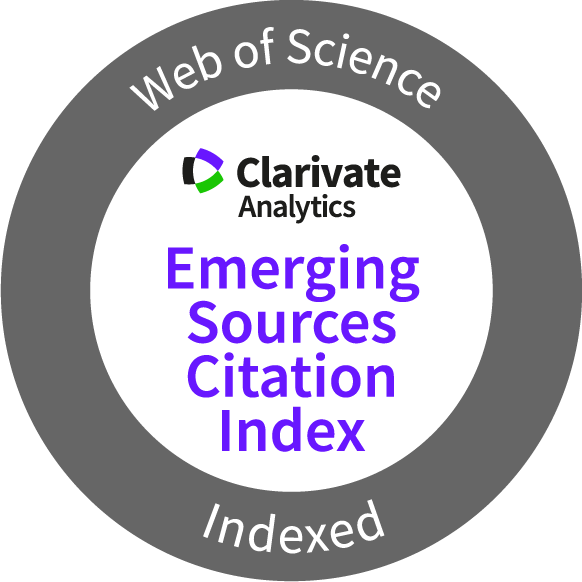Regulation of OsSAP8 Promoter in Response to Abiotic Stresses
Keywords:
Abiotic stress, β-glucuronidase (GUS), Cis-regulatory elements, Phytohormone, Promoter, Stress-associated Protein 8Abstract
Abiotic stresses such as drought, salinity and extreme temperatures pose significant challenges to crop production, particularly impacting rice yield and quality. These stresses are exacerbated by climate change and the escalation of the human population. Plant adaptation to abiotic stresses involves intricate molecular mechanisms, including gene expression alterations, metabolic adjustments, and stress-responsive gene activation. Phytohormones play pivotal roles in regulating these adaptive responses, by playing a central role in regulating plant growth and enhancing resilience to stress. Previous studies have shown that Oryza sativa Stress-associated protein 8 (OsSAP8) enhanced plant tolerance to drought and salinity stresses throughout the growth and developmental stages. In this study, we focused on the OsSAP8 promoter, especially the phytohormone-responsive Cis-Regulatory Elements (CREs), to deepen our understanding of its regulation under abiotic stress conditions. Promoter analysis identified several CREs associated with Abscisic Acid (ABA), Gibberellic Acid (GA) and Methyl-Jasmonate (MeJA) phytohormones. Subsequently, promoter deletion was performed using two different lengths of OsSAP8 promoter fragments, comprising different sets of phytohormone CREs. Promoter-β-glucuronidase (GUS) fusion constructs in transgenic Arabidopsis plants revealed that the truncated promoter fragment of pOsSAP8(934pb)::GUS exhibited stronger GUS activity compared to the full-length promoter, pOsSAP8(1801pb)::GUS under drought and salinity stresses. This suggests that the CREs responsible for OsSAP8 expression under stress conditions are located within this shorter promoter region. These findings underscore the importance of OsSAP8 in plant stress responses and provide a foundation for future research on enhancing agricultural sustainability amid changing environmental conditions.
Downloads
Metrics
References
Asad, M.A.U., Zakari, S.A., Zhao, Q., Zhou, L., Ye, Y. & Cheng, F. 2019. Abiotic stresses intervene with ABA signaling to induce destructive metabolic pathways leading to death : Premature leaf senescence in plants. International Journal of Molecular Sciences, 20(2): 256. DOI: https://doi.org/10.3390/ijms20020256
Bao, A., Jiao, T., Hu, T., Cui, K., Yue, W., Liu, Y., Zeng, H., Zhang, J., Han, S. & Wu, M. 2024. Cloning of the Arabidopsis SMAP2 promoter and analysis of its expression activity. Scientific Reports, 14(1): 1-12. DOI: https://doi.org/10.1038/s41598-024-61525-1
Bellenot, C., Routaboul, J.M., Laufs, P. & Noël, L.D. 2022. Hydathodes. Current Biology, 32(14): 763-764. DOI: https://doi.org/10.1016/j.cub.2022.06.014
Bhoi, A., Yadu, B., Chandra, J. & Keshavkant, S. 2022. Mutagenesis: A coherent technique to develop biotic stress resistant plants. Plant Stress, 3(2022): 100053. DOI: https://doi.org/10.1016/j.stress.2021.100053
Biłas, R., Szafran, K., Hnatuszko-Konka, K. & Kononowicz, A.K. 2016. Cis-regulatory elements used to control gene expression in plants. The Plant Cell, Tissue and Organ Culture, 127(2): 269-287. DOI: https://doi.org/10.1007/s11240-016-1057-7
Bolser, D.M., Staines, D.M., Perry, E. & Kersey, P.J. 2017. Ensembl Plants: Integrating tools for visualizing, mining, and analyzing plant genomic data. Methods in Molecular Biology. A. Dijk (Ed). Humana Press: New York. pp 337. DOI: https://doi.org/10.1007/978-1-4939-6658-5_1
Boon Teck, T., Pei Shan, F., Radin Firdaus, R.B., Mou Leong, T. & Mahinda Senevi, G. 2021. Impact of climate change on rice yield in malaysia: A panel data analysis. Agriculture, 11(6): 569. DOI: https://doi.org/10.3390/agriculture11060569
Bouchez, D., Tokuhisa, J.G., Llewellyn, D.J., Dennis, E.S. & Ellis, J.G. 1989. The ocs-element is a component of the promoters of several T-DNA and plant viral genes. The EMBO Journal, 8(13): 4197-4204. DOI: https://doi.org/10.1002/j.1460-2075.1989.tb08605.x
Boyes, D.C., Zayed, A.M., Ascenzi, R., McCaskill, A.J., Hoffman, N.E., Davis, K.R. & Görlach, J. 2001. Growth stage-based phenotypic analysis of Arabidopsis: A model for high throughput functional genomics in plants. The Plant Cell, 13(7): 1499-1510. DOI: https://doi.org/10.1105/TPC.010011
Brookbank, B.P., Patel, J., Gazzarrini, S. & Nambara, E. 2021. Role of basal ABA in plant growth and development. Genes, 12(12): 1936. DOI: https://doi.org/10.3390/genes12121936
Cerutti, A., Jauneau, A., Auriac, M.C., Lauber, E., Martinez, Y., Chiarenza, S., Leonhardt, N., Berthomé, R. & Noël, L.D. 2017. Immunity at cauliflower hydathodes controls systemic infection by Xanthomonas campestris pv campestris. Plant Physiology, 174(2): 700-716. DOI: https://doi.org/10.1104/pp.16.01852
Chao, J., Huang, Z., Yang, S., Deng, X. & Tian, W. 2020. Genome-wide identification and expression analysis of the phosphatase 2A family in rubber tree (Hevea brasiliensis). PLoS One, 15(2): e0228219. DOI: https://doi.org/10.1371/journal.pone.0228219
Chen, C., Chen, J., Wu, G., Li, L., Hu, Z. & Li, X. 2023. A blue light-responsive Strong synthetic promoter based on rational design in Chlamydomonas reinhardtii. International Journal of Molecular Sciences, 24(19): 14596. DOI: https://doi.org/10.3390/ijms241914596
Clough, S.J. & Bent, A.F. 1998. Floral dip: A simplified method for Agrobacterium-mediated transformation of Arabidopsis thaliana. Plant Journal, 16(6): 735-743. DOI: https://doi.org/10.1046/j.1365-313x.1998.00343.x
Cohen, S.P. & Leach, J.E. 2019. Abiotic and biotic stresses induce a core transcriptome response in rice. Scientific Reports, 9(1): 6273. DOI: https://doi.org/10.1038/s41598-019-42731-8
Cutler, S.R., Rodriguez, P.L., Finkelstein, R.R. & Abrams, S.R. 2010. Abscisic acid: Emergence of a core signaling network. Annual Review of Plant Biology, 61:651-679. DOI: https://doi.org/10.1146/annurev-arplant-042809-112122
Danquah, A., Zelicourt, A. De, Colcombet, J. & Hirt, H. 2014. The role of ABA and MAPK signaling pathways in plant abiotic stress responses. Biotechnology Advances, 32(1): 40-52. DOI: https://doi.org/10.1016/j.biotechadv.2013.09.006
Davies, P.J. 2010. The Plant Hormones: Their nature, occurrence, and functions. In: Plant Hormones. P.J. Davies (Ed.). 3rd Eds. Springer, Dordrecht. pp. 1-15. DOI: https://doi.org/10.1007/978-1-4020-2686-7_1
Davis, A.M., Hall, A., Millar, A.J., Darrah, C. & Davis, S.J. 2009. Protocol: Streamlined sub-protocols for floral-dip transformation and selection of transformants in Arabidopsis thaliana. Plant Methods, 5(3): 1-7. DOI: https://doi.org/10.1186/1746-4811-5-3
FAO. 2022. Background to the global symposium on salt-affected soils. In: Global Symposium on Salt-Affected Soils: Outcome document. Rome. pp. 3-4.
Figueroa-Balderas, R.E., García-Ponce, B. & Rocha-Sosa, M. 2006. Hormonal and stress induction of the gene encoding common bean acetyl-coenzyme a carboxylase. Plant Physiology, 142(2): 609-619. DOI: https://doi.org/10.1104/pp.106.085597
Giri, J., Vij, S., Dansana, P.K. & Tyagi, A.K. 2011. Rice A20/AN1 zinc-finger containing stress-associated proteins (SAP1⁄11) and a receptor-like cytoplasmic kinase (OsRLCK253) interact via A20 zinc-finger and confer abiotic stress tolerance in transgenic Arabidopsis plants. New Phytologist, 191: 721-732. DOI: https://doi.org/10.1111/j.1469-8137.2011.03740.x
Gopalakrishnan, T. & Kumar, L. 2021. Linking long-term changes in soil salinity to paddy land abandonment in Jaffna Peninsula, Sri Lanka. Agriculture, 11(3): 211. DOI: https://doi.org/10.3390/agriculture11030211
Hailu, B. & Mehari, H. 2021. Impacts of soil salinity/sodicity on soil-water relations and plant growth in dry land areas: A review. Journal of Natural Sciences Research, 12(3): 1-10.
Hazbir, N.A.M., Japlus, K.N., Mohammad-Sidik, A., Lam, S.D. & Md Isa, N. 2024. The Oryza sativa Stress Associated Protein (OsSAP) promoter modulates gene expression in response to abiotic stress by utilizing cis regulatory elements within the promoter region. Malaysian Applied Biology, 53(4):89-102. DOI: https://doi.org/10.55230/mabjournal.v53i4.3099
Heidari, P., Ahmadizadeh, M. & Najafi-zarrini, H. 2015. In silico analysis of cis-regulatory elements on co-expressed genes. Journal of Biological and Environmental Sciences, 9(25): 1-9.
Hernandez-Garcia, C.M. & Finer, J.J. 2014. Identification and validation of promoters and cis-acting regulatory elements. Plant Science, 217-218: 109-119. DOI: https://doi.org/10.1016/j.plantsci.2013.12.007
Higo, K., Ugawa, Y., Iwamoto, M. & Korenaga, T. 1999. Plant cis-acting regulatory DNA elements (PLACE) database: 1999. Nucleic Acids Research, 27(1): 297-300. DOI: https://doi.org/10.1093/nar/27.1.297
Hou, J., Jiang, P., Qi, S., Zhang, K., He, Q., Xu, C., Ding, Z., Zhang, K. & Li, K. 2016. Isolation and functional validation of salinity and osmotic stress inducible promoter from the maize type-II H+-pyrophosphatase gene by deletion analysis in transgenic tobacco plants. PLoS One, 11(4): 1-23. DOI: https://doi.org/10.1371/journal.pone.0154041
Huang, H., Liu, B., Liu, L. & Song, S. 2017. Jasmonate action in plant growth and development. Journal of Experimental Botany, 68(6): 1349-1359. DOI: https://doi.org/10.1093/jxb/erw495
Iqbal, J., Zia-ul-Qamar, Yousaf, U., Asgher, A., Dilshad, R., Qamar, F.M., Bibi, S., Rehman, S.U. & Haroon, M. 2023. Sustainable rice production under biotic and abiotic stress challenges. In: Sustainable Agriculture in The Era of the OMICs Revolution. A. Qayyum, S. Channa, F.S. Prakash, Baloch, M.A. Nadeem, M.A. and S. Fiaz (Eds.). Springer, Cham. pp. 241-268. DOI: https://doi.org/10.1007/978-3-031-15568-0_11
Ishibashi, Y., Takanashi, H. & Yoshida, K.T. 2016. Functional analysis of the promoter of a rice 18 kDa oleosin gene. Plant Biotechnology, 33(3): 195-200. DOI: https://doi.org/10.5511/plantbiotechnology.16.0908a
Jafar, J., Hassan, H., Shabala, S. & Ouyang, B. 2022. Signaling molecules and transcriptional reprogramming for stomata operation under salt stress. In: Stomata Regulation and Water Use Efficiency in Plants under Saline Soil Conditions. S. Shabala (Ed.). Academic Press, London. pp. 163-193. DOI: https://doi.org/10.1016/bs.abr.2022.02.013
Jefferson, R.A., Kavanagh, T.A. & Bevan, M.W. 1987. GUS fusions: beta-glucuronidase as a sensitive and versatile gene fusion marker in higher plants. The EMBO Journal, 6(13): 3901-3907. DOI: https://doi.org/10.1002/j.1460-2075.1987.tb02730.x
Kanneganti, V. & Gupta, A.K. 2008. Overexpression of OsiSAP8, a member of stress associated protein (SAP) gene family of rice confers tolerance to salt, drought and cold stress in transgenic tobacco and rice. Plant Molecular Biology, 66(5): 445-462. DOI: https://doi.org/10.1007/s11103-007-9284-2
Kaur, A., Pati, P.K., Pati, A.M. & Nagpal, A.K. 2017. In-silico analysis of cis-acting regulatory elements of pathogenesis-related proteins of Arabidopsis thaliana and Oryza sativa. PLoS One 12(9): e0184523. DOI: https://doi.org/10.1371/journal.pone.0184523
Kawamura, E., Horiguchi, G. & Tsukaya, H. 2010. Mechanisms of leaf tooth formation in Arabidopsis. Plant Journal, 62(3): 429-441. DOI: https://doi.org/10.1111/j.1365-313X.2010.04156.x
Kim, J.S., Mizoi, J., Yoshida, T., Fujita, Y., Nakajima, J., Ohori, T., Todaka, D., Nakashima, K., Hirayama, T., Shinozaki, K. & Yamaguchi-Shinozaki, K. 2011. An ABRE promoter sequence is involved in osmotic stress-responsive expression of the DREB2A gene, which encodes a transcription factor regulating drought-inducible genes in Arabidopsis. Plant and Cell Physiology, 52(12): 2136-2146. DOI: https://doi.org/10.1093/pcp/pcr143
Knudsen, S. 1999. Promoter 2.0: For the recognition of PolII promoter sequences. Bioinformatics, 15(5): 356-361. DOI: https://doi.org/10.1093/bioinformatics/15.5.356
Kong, W., Ding, L., Cheng, J. & Wang, B. 2018. Identification and expression analysis of genes with pathogen-inducible cis-regulatory elements in the promoter regions in Oryza sativa. Rice, 11(1): 52. DOI: https://doi.org/10.1186/s12284-018-0243-0
Krämer, U. 2015. Planting molecular functions in an ecological context with Arabidopsis thaliana. eLife, 4: e06100. DOI: https://doi.org/10.7554/eLife.06100
Lai, G., Song, S., Liu, Y., Fu, P., Xiang, J. & Lu, J. 2019. RPW8 promoter is involved in pathogen and stress-inducible expression from Vitis pseudoreticulata. Journal of Phytopathology, 167(2): 65-74. DOI: https://doi.org/10.1111/jph.12768
Lam, E., Benfey, P.N., Gilmartin, P.M., Fang, R.-X. & Chua, N.-H. 1989. Site-specific mutations alter in vitro factor binding and change promoter expression pattern in transgenic plants. In: Proceedings of the National Academy of Sciences of the United States of America, 86(20): 7890-7894. DOI: https://doi.org/10.1073/pnas.86.20.7890
Lenka, S. & Bansal, K. 2019. Abiotic stress responsive cis-regulatory elements (CREs) in rice (Oryza sativa L.) and other plants. OSF Preprints. DOI: https://doi.org/10.31219/osf.io/n98t5
Lescot, M., Déhais, P., Thijs, G., Marchal, K., Moreau, Y., Van De Peer, Y., Rouzé, P. & Rombauts, S. 2002. PlantCARE, a database of plant cis-acting regulatory elements and a portal to tools for in silico analysis of promoter sequences. Nucleic Acids Research, 30(1): 325-327. DOI: https://doi.org/10.1093/nar/30.1.325
Li, M., Zhang, H., He, D., Damaris, R.N. & Yang, P. 2022. A stress-associated protein OsSAP8 modulates gibberellic acid biosynthesis by reducing the promotive effect of transcription factor OsbZIP58 on OsKO2. Journal of Experimental Botany, 73(8): 2420-2433. DOI: https://doi.org/10.1093/jxb/erac027
Liu, S., Liu, C., Wang, X. & Chen, H. 2020. Seed ‑ specific activity of the Arabidopsis β ‑ glucosidase 19 promoter in transgenic Arabidopsis and tobacco. Plant Cell Reports, 40: 213-221. DOI: https://doi.org/10.1007/s00299-020-02627-8
Liu, X. & Hou, X. 2018. Antagonistic regulation of ABA and GA in metabolism and signaling pathways. Frontiers in Plant Science, 9: 251. DOI: https://doi.org/10.3389/fpls.2018.00251
Ma, B., Yuan, Y., Gao, M., Xing, L., Li, C., Li, M. & Ma, F. 2018. Genome-wide identification, classification, molecular evolution and expression analysis of malate dehydrogenases in apple. International Journal of Molecular Sciences, 19(11): 3312. DOI: https://doi.org/10.3390/ijms19113312
Magwanga, R.O., Lu, P., Kirungu, J.N., Lu, H., Wang, X., Cai, X., Zhou, Z., Zhang, Z., Salih, H., Wang, K. & Liu, F. 2018. Characterization of the late embryogenesis abundant (LEA) proteins family and their role in drought stress tolerance in upland cotton. BMC Genetics, 19(1): 6. DOI: https://doi.org/10.1186/s12863-017-0596-1
Maqsood, H., Munir, F., Amir, R. & Gul, A. 2022. Genome-wide identification, comprehensive characterization of transcription factors, cis-regulatory elements, protein homology, and protein interaction network of DREB gene family in Solanum lycopersicum. Frontiers in Plant Science 13: 1031679. DOI: https://doi.org/10.3389/fpls.2022.1031679
Marothia, D., Kaur, N. & Kumar Pati, P. 2021. Abiotic stress responses in plants: Current knowledge and future prospects. In: Abiotic Stress in Plants. S. Fahad, S. Saud, Y. Chen, C. Wu and D. Wang (Eds.). IntechOpen, London. pp. 73-91. DOI: https://doi.org/10.5772/intechopen.93824
Martin, R.C., Glover-Cutter, K., Baldwin, J.C. & Dombrowski, J.E. 2012. Identification and characterization of a salt stress-inducible zinc finger protein from Festuca arundinacea. BMC Research Notes, 5(66). DOI: https://doi.org/10.1186/1756-0500-5-66
Misra, S. & Ganesan, M. 2021. The impact of inducible promoters in transgenic plant production and crop improvement. Plant Gene, 27: 100300. DOI: https://doi.org/10.1016/j.plgene.2021.100300
Mongkolsiriwatana, C., Pongtongkam, P. & Peyachoknagul, S. 2009. In silico promoter analysis of photoperiod-responsive genes identified by DNA microarray in rice (Oryza sativa L.). Kasetsart Journal - Natural Science, 43(1): 164-177.
Murray, A., Mendieta, J.P., Vollmers, C. & Schmitz, R.J. 2022. Simple and accurate transcriptional start site identification using Smar2C2 and examination of conserved promoter features. The Plant Journal, 112(2):583-596. DOI: https://doi.org/10.1111/tpj.15957
Peleg, Z. & Blumwald, E. 2011. Hormone balance and abiotic stress tolerance in crop plants. Current Opinion in Plant Biology, 14(3): 290-295. DOI: https://doi.org/10.1016/j.pbi.2011.02.001
Quesada, V. 2022. Advances in the molecular mechanisms of abscisic acid and gibberellins functions in Plants 2.0. International Journal of Molecular Sciences, 23(15): 8524. DOI: https://doi.org/10.3390/ijms23158524
Ramkumar, G., Madhav, M.S., Rama Devi, S.J.S., Manimaran, P., Mohan, K.M., Prasad, M.S., Balachandran, S.M., Neeraja, C.N., Sundaram, R.M. & Viraktamath, B.C. 2014. Nucleotide diversity of Pita, a major blast resistance gene and identification of its minimal promoter. Gene, 546(2): 250-256. DOI: https://doi.org/10.1016/j.gene.2014.06.001
Rerksiri, W., Zhang, X., Xiong, H. & Chen, X. 2013. Expression and promoter analysis of six heat stress-inducible genes in rice. The Scientific World Journal, 2013: 397401. DOI: https://doi.org/10.1155/2013/397401
Rivero, L., Scholl, R., Holomuzki, N., Crist, D., Grotewold, E. & Brkljacic, J. 2014. Handling Arabidopsis plants: Growth, preservation of seeds, transformation, and genetic crosses. Methods in Molecular Biology, 1062: 3-25. DOI: https://doi.org/10.1007/978-1-62703-580-4_1
Roșca, M., Mihalache, G. & Stoleru, V. 2023. Tomato responses to salinity stress: From morphological traits to genetic changes. Frontiers in Plant Science, 14: 1118383. DOI: https://doi.org/10.3389/fpls.2023.1118383
Roslan, N.F., Rashid, N.S.A., Suka, I.E., Taufik, N.A.N.A., Abdullah, N.S., Asruri, M.B., Toni, B., Sukiran, N.L., Zainal, Z. & Isa, N.M. 2017. Enhanced tolerance to salinity stress and ABA is regulated by Oryza sativa STRESS ASSOCIATED PROTEIN 8 (OsSAP8). Australian Journal of Crop Science, 11(7): 853-860. DOI: https://doi.org/10.21475/ajcs.17.11.07.pne505
Roszelin, S.A.M., Hazbir, N.A.M., Jumali, S.S., Shakri, T. & Isa, N.M. 2023. Characterization and functional study of stress-associated protein in rice and arabidopsis. Malaysian Applied Biology 52(3): 73-86. DOI: https://doi.org/10.55230/mabjournal.v52i3.2705
Saad, R. Ben, Zouari, N., Ben Ramdhan, W., Azaza, J., Meynard, D., Guiderdoni, E. & Hassairi, A. 2010. Improved drought and salt stress tolerance in transgenic tobacco overexpressing a novel A20/AN1 zinc-finger "alSAP" gene isolated from the halophyte grass Aeluropus littoralis. Plant Molecular Biology, 72(1-2): 171-190. DOI: https://doi.org/10.1007/s11103-009-9560-4
Sabagh, A. EL, Islam, M.S., Hossain, A., Iqbal, M.A., Mubeen, M., Waleed, M., Reginato, M., Battaglia, M., Ahmed, S., Rehman, A., Arif, M., Athar, H.U.R., Ratnasekera, D., Danish, S., Raza, M.A., Rajendran, K., Mushtaq, M., Skalicky, M., Brestic, M., Soufan, W., Fahad, S., Pandey, S., Kamran, M., Datta, R. & Abdelhamid, M.T. 2022. Phytohormones as growth regulators during abiotic stress tolerance in plants. Frontiers in Agronomy, 4: 765068. DOI: https://doi.org/10.3389/fagro.2022.765068
Sahid, S., Roy, C., Paul, S. & Datta, R. 2020. Rice lectin protein Osr40c1 imparts drought tolerance by modulating OsSAM2, OsSAP8 and chromatin-associated proteins. Journal of Experimental Botany, 71(22): 7331-7346. DOI: https://doi.org/10.1093/jxb/eraa400
Santner, A. & Estelle, M. 2010. The ubiquitin-proteasome system regulates plant hormone signaling. Plant Journal, 61(6): 1029-1040. DOI: https://doi.org/10.1111/j.1365-313X.2010.04112.x
Schmitz, R.J., Grotewold, E. & Stam, M. 2022. Cis-regulatory sequences in plants: Their importance, discovery, and future challenges. The Plant Cell, 34(2): 718-741. DOI: https://doi.org/10.1093/plcell/koab281
Shahmuradov, I.A., Umarov, R.K. & Solovyev, V. V. 2017. TSSPlant: A new tool for prediction of plant Pol II promoters. Nucleic Acids Research, 45(8). DOI: https://doi.org/10.1093/nar/gkw1353
Shaw, L. 2021. Arabidopsis growth on agar plates [WWW Document]. ARC COE for Plant Success in Nature and Agriculture.
Shokri-Gharelo, R., Bandehagh, A., Mahmoudi, B. & Moti-Noparvar, P. 2017. In silico study of cis-acting elements revealing the plastid gene involved in oxidative phosphorylation are responsive to abiotic stresses. Acta biologica Szegediensis, 61(2): 179-188.
Shu, K., Chen, Q., Wu, Y., Liu, R., Zhang, H., Wang, S., Tang, S., Yang, W. & Xie, Q. 2016. Abscisic acid-insensitive 4 negatively regulates flowering through directly promoting Arabidopsis Flowering Locus C transcription. Journal of Experimental Botany, 67(1): 195-205. DOI: https://doi.org/10.1093/jxb/erv459
Shu, K., Zhou, W., Chen, F., Luo, X. & Yang, W. 2018. Abscisic acid and gibberellins antagonistically mediate plant development and abiotic stress responses. Frontiers in Plant Science, 9: 416. DOI: https://doi.org/10.3389/fpls.2018.00416
Singh, A. & Roychoudhury, A. 2023. Abscisic acid in plants under abiotic stress : Crosstalk with major phytohormones. Plant Cell Reports, 42(6): 961-974. DOI: https://doi.org/10.1007/s00299-023-03013-w
Singh, D. & Laxmi, A. 2015. Transcriptional regulation of drought response: A tortuous network of transcriptional factors. Frontiers in Plant Science, 6:895. DOI: https://doi.org/10.3389/fpls.2015.00895
Srivastava, V.K., Raikwar, S. & Tuteja, N. 2014. Cloning and functional characterization of the promoter of PsSEOF1 gene from Pisum sativum under different stress conditions using Agrobacterium-mediated transient assay. Plant Signaling and Behavior, 9(9): e29626. DOI: https://doi.org/10.4161/psb.29626
Su, D., Xiang, W., Wen, L., Lu, W., Shi, Y., Liu, Y. & Li, Z. 2021. Genome-wide identification, characterization and expression analysis of BES1 gene family in tomato. BMC Plant Biology, 21(1): 161. DOI: https://doi.org/10.1186/s12870-021-02933-7
Tao, Y., Wang, F., Jia, D., Li, J., Zhang, Y., Jia, C., Wang, D. & Pan, H. 2015. Cloning and functional analysis of the promoter of a stress-inducible gene (ZmRXO1) in maize. Plant Molecular Biology Reporter, 33(2): 200-208. DOI: https://doi.org/10.1007/s11105-014-0741-1
Tuteja, N. & Sopory, S.K. 2008. Chemical signaling under abiotic stress environment in plants. Plant Signaling and Behavior, 3(8): 525-536. DOI: https://doi.org/10.4161/psb.3.8.6186
Tuteja, N. 2007. Abscisic acid and abiotic stress signaling. Plant Signaling and Behavior, 2(3): 135-138. DOI: https://doi.org/10.4161/psb.2.3.4156
United Nations. 2022. World population reaches 8 billion on 15 November 2022 [WWW Document]. United Nations: Department of Economic and Social Affairs.
Venegas-Molina, J., Proietti, S., Pollier, J., Orozco-Freire, W., Ramirez-Villacis, D. & Leon-Reyes, A. 2020. Induced tolerance to abiotic and biotic stresses of broccoli and Arabidopsis after treatment with elicitor molecules. Scientific Reports, 10(1): 10319. DOI: https://doi.org/10.1038/s41598-020-67074-7
Verma, V., Ravindran, P. & Kumar, P.P. 2016. Plant hormone-mediated regulation of stress responses. BMC Plant Biology, 16: 86. DOI: https://doi.org/10.1186/s12870-016-0771-y
Wahab, A., Abdi, G., Saleem, M.H., Ali, B., Ullah, S., Shah, W., Mumtaz, S., Yasin, G., Muresan, C.C. & Marc, R.A. 2022. Plants' physio-biochemical and phyto-hormonal responses to alleviate the adverse effects of drought stress: A comprehensive review. Plants, 11(13):1620. DOI: https://doi.org/10.3390/plants11131620
Wang, P., Du, Y., Zhao, X., Miao, Y. & Song, C.P. 2013. The MPK6-ERF6-ROS-responsive cis-acting element7/GCC box complex modulates oxidative gene transcription and the oxidative response in arabidopsis. Plant Physiology, 161(3): 1392-1408. DOI: https://doi.org/10.1104/pp.112.210724
Wang, S., Lv, X., Zhang, J., Chen, D., Chen, S., Fan, G., Ma, C. & Wang, Y. 2022. Roles of E3 ubiquitin ligases in plant responses to abiotic stresses. International Journal of Molecular Sciences, 23(4): 2308. DOI: https://doi.org/10.3390/ijms23042308
Wang, Y., Liu, G.J., Yan, X.F., Wei, Z.G. & Xu, Z.R. 2011. MeJA-inducible expression of the heterologous JAZ2 promoter from Arabidopsis in Populus trichocarpa protoplasts. Journal of Plant Diseases and Protection, 118(2): 69-74. DOI: https://doi.org/10.1007/BF03356384
Wang, Y., Mostafa, S., Zeng, W. & Jin, B. 2021. Function and mechanism of Jasmonic acid in plant responses to abiotic and biotic Stresses. International Journal of Molecular Sciences, 22: 8568. DOI: https://doi.org/10.3390/ijms22168568
Wasternack, C. & Song, S. 2017. Jasmonates: Biosynthesis, metabolism, and signaling by proteins activating and repressing transcription. Journal of Experimental Botany, 68(6): 1303-1321.
Weiss, D. & Ori, N. 2007. Mechanisms of cross talk between gibberellin and other hormones. Plant Physiology, 144(3): 1240-1246. DOI: https://doi.org/10.1104/pp.107.100370
Yagi, H., Nagano, A.J., Kim, J., Tamura, K., Mochizuki, N., Nagatani, A., Matsushita, T. & Shimada, T. 2021a. Fluorescent protein-based imaging and tissue-specific RNA-seq analysis of Arabidopsis hydathodes. Journal of Experimental Botany, 72(4): 1260-1270. DOI: https://doi.org/10.1093/jxb/eraa519
Yagi, H., Tamura, K., Matsushita, T. & Shimada, T. 2021b. Spatiotemporal relationship between auxin dynamics and hydathode development in Arabidopsis leaf teeth. Plant Signaling and Behavior, 16(12): e1989216. DOI: https://doi.org/10.1080/15592324.2021.1989216
Yang, X., Jia, Z., Pu, Q., Tian, Y., Zhu, F. & Liu, Y. 2022. ABA mediates plant development and abiotic stress via alternative splicing. International Journal of Molecular Sciences, 23(7): 3796. DOI: https://doi.org/10.3390/ijms23073796
Zhang, H., Ma, F., Wang, X., Liu, S., Saeed, U.H., Hou, X., Zhang, Y., Luo, D., Meng, Y., Zhang, W., Abid, K. & Chen, R. 2020. Molecular and functional characterization of CaNAC035, an NAC transcription factor from pepper (Capsicum annuum L.). Frontiers in Plant Science, 11(14). DOI: https://doi.org/10.3389/fpls.2020.00014
Zhang, J., Schurr, U. & Davies, W.J. 1987. Control of stomatal behaviour by abscisic acid which apparently originates in the roots. Journal of Experimental Botany, 38(7): 1174-1181. DOI: https://doi.org/10.1093/jxb/38.7.1174
Zhang, K., Cui, H., Cao, S., Yan, L., Li, M. & Sun, Y. 2019. Overexpression of CrCOMT from Carex rigescens increases salt stress and modulates melatonin synthesis in Arabidopsis thaliana. Plant Cell Reports, 38(12): 1501-1514. DOI: https://doi.org/10.1007/s00299-019-02461-7
Zhang, X., Henriques, R., Lin, S.S., Niu, Q.W. & Chua, N.H. 2006. Agrobacterium-mediated transformation of Arabidopsis thaliana using the floral dip method. Nature Protocols, 1(2): 641-646. DOI: https://doi.org/10.1038/nprot.2006.97
Zhang, Y., Lan, H., Shao, Q., Wang, R., Chen, H., Tang, H., Zhang, H. & Huang, J. 2016. An A20/AN1-type zinc finger protein modulates gibberellins and abscisic acid contents and increases sensitivity to abiotic stress in rice (Oryza sativa). Journal of Experimental Botany, 67(1): 315-326. DOI: https://doi.org/10.1093/jxb/erv464
Zhou, X.-T., Jia, L.-D., Duan, M.-Z., Chen, X., Qiao, C.-L., Ma, J.-Q., Zhang, C., Jing, F.-Y., Zhang, S.-S., Yang, B., Zhang, L.-Y. & Li, J.-N. 2020. Cis-acting elements in the promoter regions of BnCCDs. PLoS One. Dataset.
Zhu, J. 2002. Salt and drought stress signal transduction in plants. Annual Review of Plant Biology, 53: 247-73.
Published
How to Cite
Issue
Section
Any reproduction of figures, tables and illustrations must obtain written permission from the Chief Editor (wicki@ukm.edu.my). No part of the journal may be reproduced without the editor’s permission
Funding data
-
Ministry of Higher Education, Malaysia
Grant numbers FRGS/1/2020/STG01/UKM/02/6 -
Universiti Kebangsaan Malaysia
Grant numbers GUP-2018-115




















